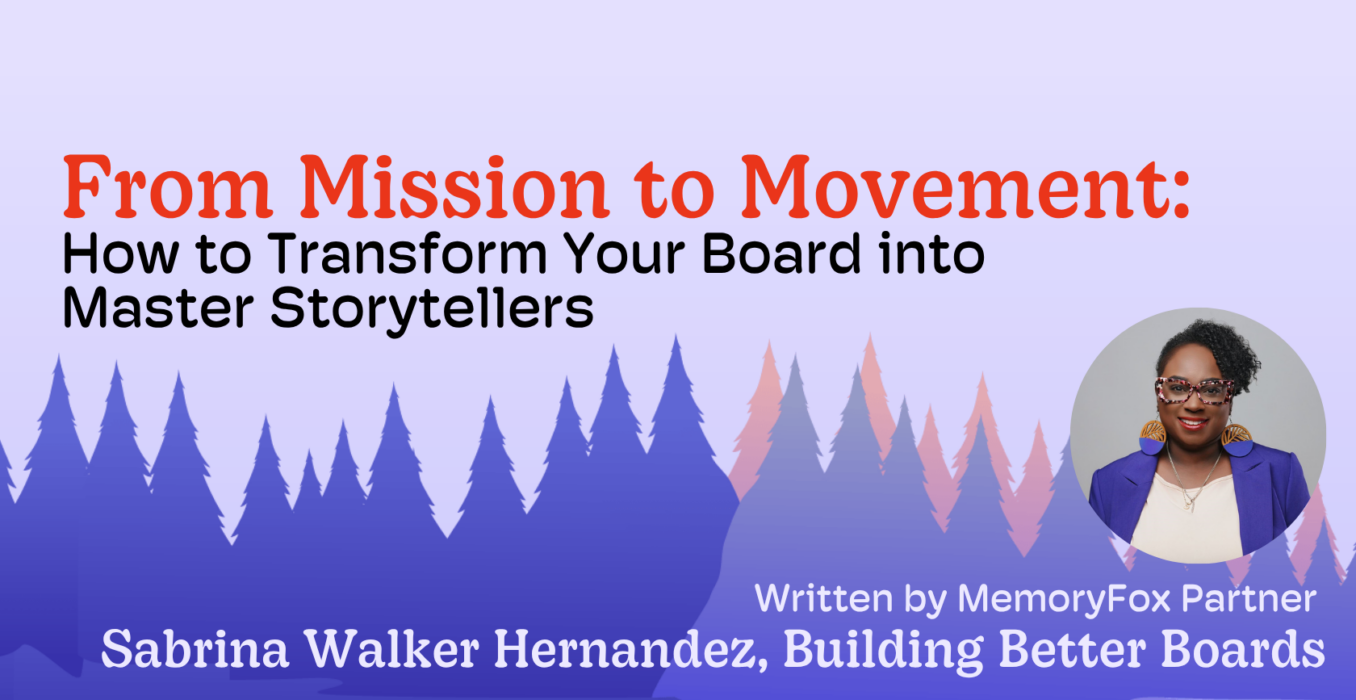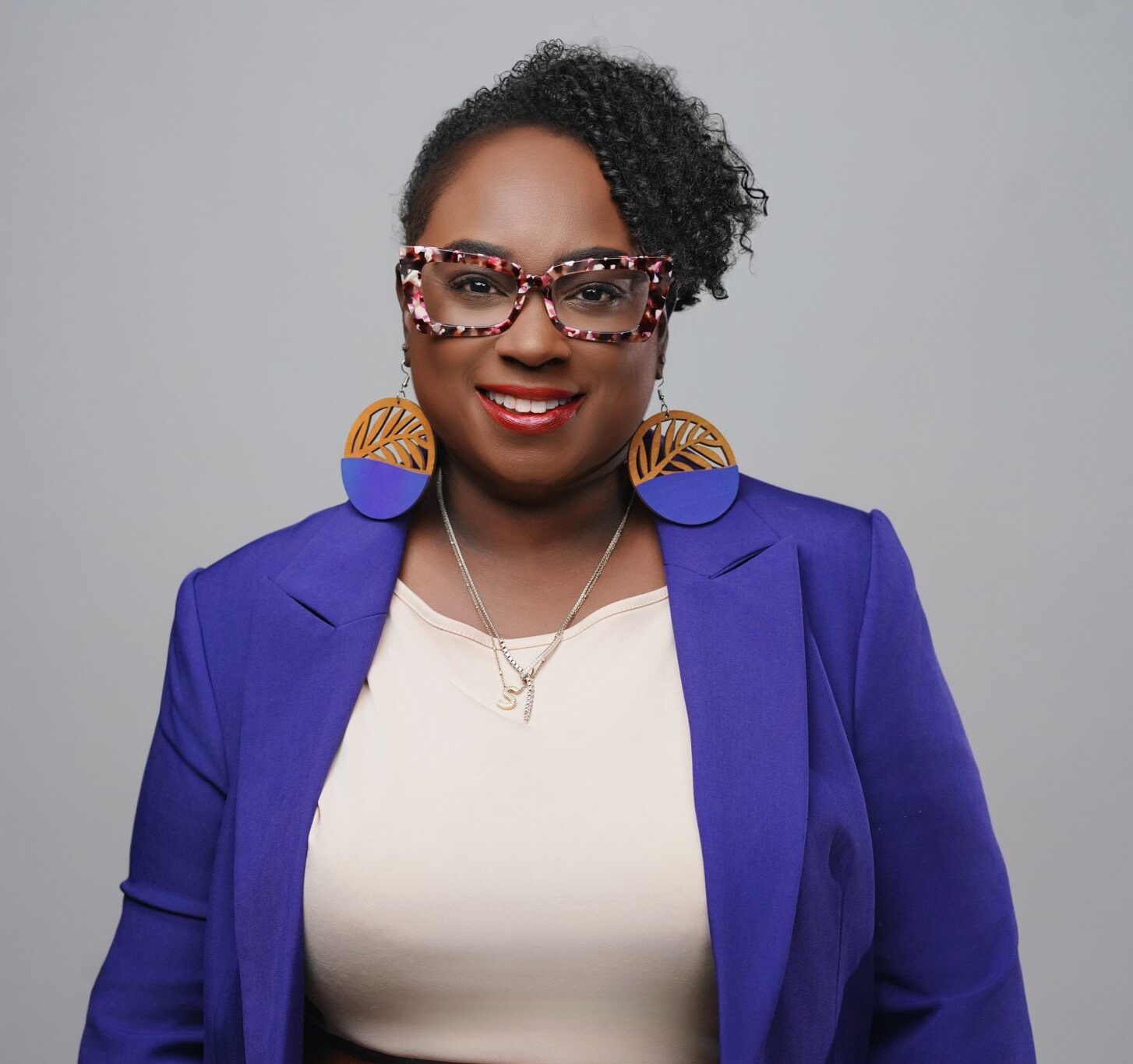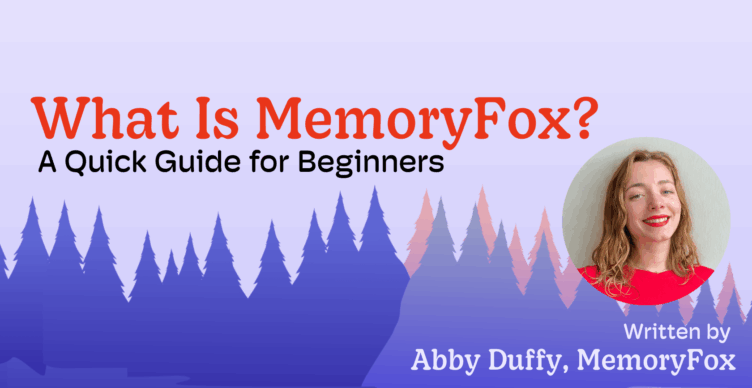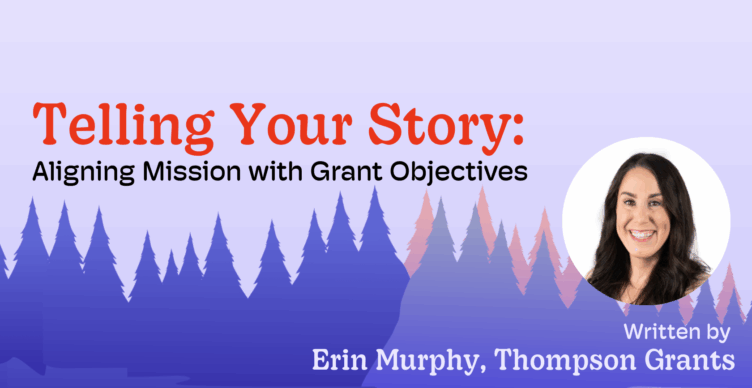Fundraising Tips, Storytelling Strategy
From Mission to Movement: How to Transform Your Board into Master Storytellers

Nonprofit leaders understand that while facts inform, it’s stories that truly inspire. Yet, the storytelling potential within the boardroom often remains untapped. Imagine if every board member could confidently share authentic, moving stories that not only connect with donors but also turn casual listeners into passionate advocates.
Why Board Storytelling Matters
Storytelling isn’t just a fundraising tool; it’s a bridge to connection, trust, and long-term support. The numbers speak for themselves. According to data compiled by MemoryFox:
- Donor Retention: Nonprofits that effectively use storytelling in fundraising efforts have a donor retention rate of 45%, compared to just 27% for those that don’t prioritize storytelling.
- Video Impact: 57% of people who watch nonprofit videos go on to make a donation.
- Fundraising Success: Campaigns that incorporate video storytelling receive 114% more funding than those without.
Board members are uniquely positioned to tell these stories. They bring lived experience, personal passion, and trusted relationships with your audience—assets that, when tapped into, can elevate your fundraising and deepen community impact.
Unlocking the Hidden Gold in Your Boardroom
Every board member has a reason they said “yes” to your mission. Many have powerful personal stories or connections that can resonate with donors and community members. But common barriers—fear of public speaking, thinking they need the “perfect” story, or simply not knowing what to share—can keep these stories locked away.
The key is to shift the mindset: you don’t need a stage, you need a moment. Storytelling doesn’t just happen at galas or in front of large crowds; it happens over coffee, at networking events, and in thank-you calls.
1. The “Start with Why” Approach (Simon Sinek Style):
- WHY: Begin with your purpose.
“I joined this board because I believe every child deserves a safe place to dream, grow, and be seen—not just survive…”
- HOW: Share the transformation your organization delivers.
“At [Organization], we provide mentorship, meals, and a space where students feel like they matter…”
- WHAT: End with a call to action.
“We can’t do this alone. Join us—through your donation, your voice, or your time…”
2. The 3-Part Story Arc: Before – Change – After
- Before: Paint the picture of the challenge or need.
- Change: Describe the intervention or program.
- After: Highlight the impact and transformation.
Example: “Miguel, age 12, spent afternoons alone while his parents worked. His grades were slipping, and he felt isolated. After joining our Bright Futures program, he found mentorship and community. Now, Miguel leads our robotics club and dreams of college. For just $1,200, we can provide a year of after-school support for a child like Miguel.”
Embedding Storytelling in Board Culture
To make storytelling part of your board’s DNA, integrate it into your regular practices:
- Mission Moments: Start each board meeting with a client impact story—ideally, have the client share it themselves.
- Mingle Moments: Facilitate peer-to-peer sharing among board members. Ask, “Why did you say yes to being on the board?” or “What story do you tell friends about your involvement?”
- Monthly Story Spotlights: Highlight a story in every meeting and use it in thank-you notes and donor communications.
- Mentorship: Pair new board members with storytelling mentors to build confidence and skill.
Storytelling Across the Fundraising Cycle
Board members don’t all need to be comfortable making the ask—and that’s okay. In fact, only about 5% of the fundraising process is the actual solicitation. The other 95%? It’s about identifying, qualifying, cultivating, and thanking donors. These stages are just as important, and each one presents a powerful opportunity for board members to use storytelling.
Here’s how:
- During the identification and qualification stage, board members can serve as door openers—sharing their personal connection to the mission to help introduce new potential supporters.
- In the cultivation phase, they become relationship builders—offering impact stories over lunch, during tours, or in casual conversation to deepen a donor’s emotional investment.
- When it comes time to ask, those who feel confident can act as solicitors, using transformation stories to make a compelling case for support.
- And after the gift, board members play the role of stewards—sharing meaningful updates and stories of impact to express gratitude and reinforce the donor’s decision to give.
When you equip your board with the right stories for each step of the donor journey, you empower them to contribute in ways that align with their comfort level and strengths—while still moving your mission forward.
Practical Tips for Virtual and In-Person Boards
- For virtual boards, open each meeting with a “mission moment” shared by a board member or client—even a brief story can set the tone and inspire engagement.
- Use visuals, videos, or photos to bring stories to life, especially when in-person interaction isn’t possible.
Making Storytelling a Habit
- Add storytelling to every board agenda.
- Celebrate and reinforce storytelling successes.
- Provide worksheets or prompts (the “Why–How–What” or “Before–Change–After” frameworks) to make it easy for board members to craft and share their stories.
- Remember: it takes repetition—try a new practice at least 100 times before deciding if it works for your board.
Final Thought: What Story Will You Tell This Week?
Your board is sitting on a gold mine of stories. By unlocking this potential and embedding storytelling into your board culture, you’ll not only boost fundraising but also deepen connections and inspire lasting commitment to your mission.
What story will you tell this week?

About the Author
Sabrina Walker Hernandez
President & CEO, Building Better Boards
Sabrina Walker Hernandez is the President & CEO of Building Better Boards, where she transforms high-level potential into extraordinary performance. A Harvard-certified nonprofit strategist, bestselling author, and renowned keynote speaker, Sabrina specializes in helping corporate and nonprofit boards build elite leadership teams, raise millions, and lead with purpose.
With over 25 years of executive experience and more than $36 million raised, Sabrina has trained 10,000+ leaders through her powerful workshops like How to Build Superior Work Teams and How to Build a 7-Figure Nonprofit Board. Her message reaches national audiences through her hit podcast Sipping Tea with Sabrina and her role as editor of the Here’s the Tea Nonprofit Report.
You can follow Sabrina on LinkedIn and visit her website at www.buildingbetterboards.com.




